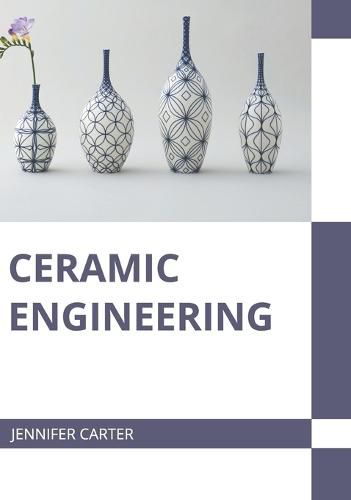Readings Newsletter
Become a Readings Member to make your shopping experience even easier.
Sign in or sign up for free!
You’re not far away from qualifying for FREE standard shipping within Australia
You’ve qualified for FREE standard shipping within Australia
The cart is loading…






Ceramic engineering is a branch of engineering which deals with creation of objects from non-metallic and inorganic materials, called ceramics. It finds its application in various industries such as aerospace, electronics, automotive, etc. Earthenware, bricks and porcelain are some common examples of ceramics. They have crystalline, partly crystalline or amorphous structure with either short range or long range atomic order. Primarily ceramics are formed by application of heat on raw materials such as clay or any other earthen elements. The general sequence of processes followed in the formation of ceramics is milling, batching, mixing, forming, drying, firing and assembly. Ceramic engineering is an upcoming field of science that has undergone rapid development over the past few decades. This book unfolds the innovative aspects of this field which will be crucial for the holistic understanding of the subject matter. It is a complete source of knowledge on the present status of this field.
$9.00 standard shipping within Australia
FREE standard shipping within Australia for orders over $100.00
Express & International shipping calculated at checkout
Ceramic engineering is a branch of engineering which deals with creation of objects from non-metallic and inorganic materials, called ceramics. It finds its application in various industries such as aerospace, electronics, automotive, etc. Earthenware, bricks and porcelain are some common examples of ceramics. They have crystalline, partly crystalline or amorphous structure with either short range or long range atomic order. Primarily ceramics are formed by application of heat on raw materials such as clay or any other earthen elements. The general sequence of processes followed in the formation of ceramics is milling, batching, mixing, forming, drying, firing and assembly. Ceramic engineering is an upcoming field of science that has undergone rapid development over the past few decades. This book unfolds the innovative aspects of this field which will be crucial for the holistic understanding of the subject matter. It is a complete source of knowledge on the present status of this field.